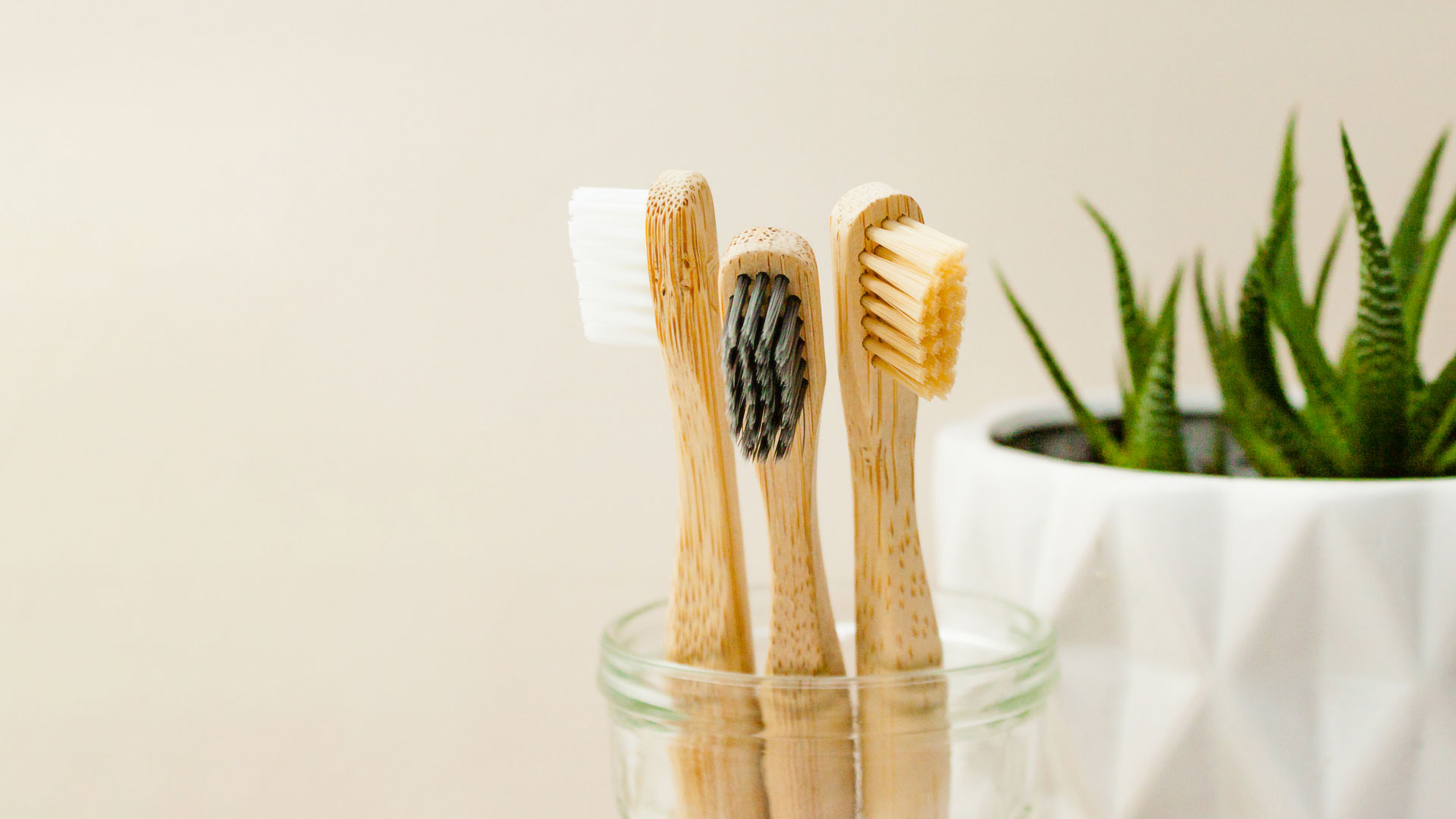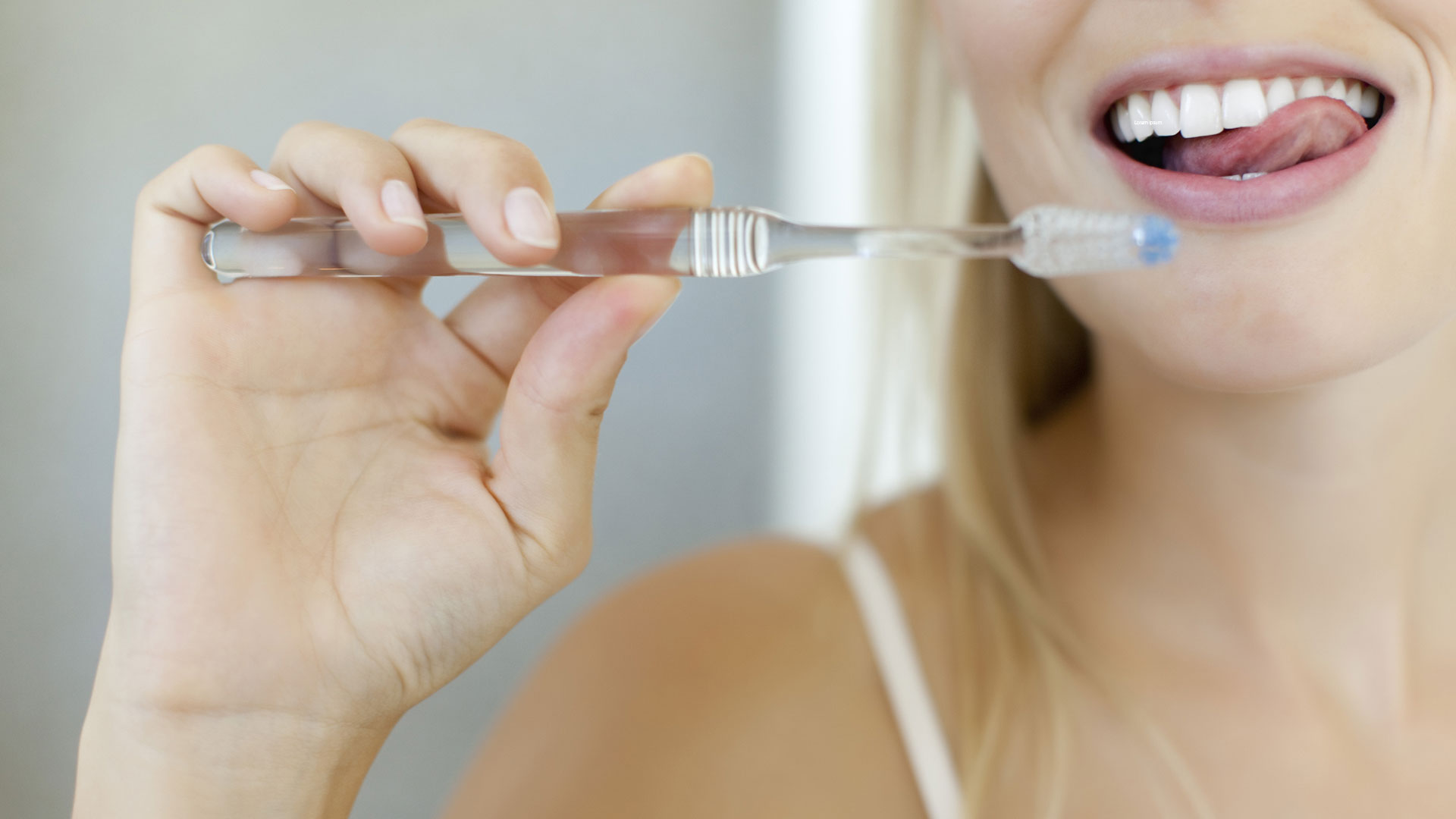Are teeth naturally yellow?
A white smile is important to many people, but are teeth naturally yellow?

You may long for a whiter smile, but are teeth naturally yellow? In a world where tooth whitening is increasingly common, especially among those in the public eye, it can be easy to forget what natural teeth look like. A study conducted by OnePoll on behalf of Snow Teeth Whitening showed that up to 61% of Americans wish they could change the appearance of their teeth with a lack of whiteness coming out on top.
Despite many Americans having concerns about the appearance of their teeth, the average person only brushes their teeth for 45 to 70 seconds a day in findings from the Academy of General Dentistry. Experts recommend brushing teeth twice a day for two minutes. Maintaining good oral hygiene is an important factor in the appearance of your teeth, and investing in one of the best electric toothbrushes or the best electric toothbrushes for kids can go a long way.
In this article, we will dive into the science behind the color of our teeth. We look at whether yellow teeth are a sign of poor health, and what you can do to improve the appearance of yellow teeth. You can read more about ways to naturally whiten teeth to see which methods are worth trying and which you should avoid.
Are teeth naturally yellow?
So, are teeth naturally yellow? To find out more, we first need to delve into the composition of our teeth. They are made up of three different layers. Enamel is the hardest substance in the human body and forms the outermost layer, dentin is in the middle and the innermost layer is pulp. Not many people realize that it is the dentin, the middle layer of a tooth, which gives it color. For most of us, the dentin is a pale yellow but shades of red or amber are normal too. The enamel layer is fairly clear yet it has the power to affect the appearance of our teeth. For people with thicker enamel, the teeth can appear less yellow because the dentin does not penetrate so easily through the enamel.
The color that we see is often more about the thickness of the enamel than the color of our teeth. Dr. Sameet Hindocha, dentist at My Mouth explained that: "everyone has different enamel and dentin thickness and characteristics within the tooth which can give off different colors other than just white which is perfectly normal."
While there may be variation in the color of our teeth even from an early age, most people’s primary teeth appear whiter than their adult teeth. This is why they are called milk teeth in many European countries. Dr. Hindocha explains that primary teeth appear whiter "because the enamel of babies’ teeth is thicker, which hides the yellow of the dentin underneath."
Have a look at our feature on 'is teeth whitening safe' for a more in-depth look at the benefits and risks associated with artificial teeth whitening.
Get the world’s most fascinating discoveries delivered straight to your inbox.

Are yellow teeth a sign of poor oral health?
It is perfectly natural to have yellow teeth and this is not necessarily a sign of poor oral health. Even with a healthy lifestyle, factors outside of our control can affect the appearance of our teeth such as our genes and the thickness of our tooth enamel. Our teeth often appear more yellow over time as part of the aging process. Dr. Hindocha told Live Science: "as we get older, our enamel thins or breaks down which means that the inner part of the tooth shows through more, making the teeth appear more yellow or creamier. Additionally, staining from certain foods and drinks, including tea and coffee, can also contribute towards the yellowing of teeth." Yellow teeth are not necessarily a sign of poor oral health, though in some cases it may signal that the enamel has eroded and that the teeth could be weak and prone to chipping.
Dr. Hindocha added: "there are a number of other factors which may affect the color of our teeth. Silver fillings can discolor the teeth grey as they release 'corrosion' products over time. Teeth that have suffered from trauma or dental abscesses may also appear darker over time as the nerve may die away and require treatment. Some people may genetically have discoloration of their teeth and this is usually related to discoloration inside the tooth." A study in the British Dental Journal shows that some metabolic disorders are associated with tooth discoloration as well as the use of medications like tetracycline.
Our lifestyle choices can also influence the color of our teeth. Smoking can cause teeth to yellow rapidly. The tar and nicotine in tobacco are responsible for this staining effect. Coffee, red wine, chocolate, and fizzy drinks can all contribute to discoloration.

What can you do about yellow teeth?
While yellow teeth are not necessarily unhealthy, for many people the appearance of their teeth can affect their confidence. Luckily, there are changes we can make to improve how our teeth look. Maintaining good oral hygiene is an important preventative strategy. Experts recommend regular tooth brushing and flossing, plus mouthwash can be beneficial. When it comes to toothpaste, Dr. Hindocha advises that: "whitening toothpaste or activated charcoal toothpaste may help to remove stains more effectively, keeping the teeth whiter. You should always check with your dentist or hygienist whether a whitening toothpaste is good for you as some can be abrasive."
Lifestyle changes can help improve the appearance of your teeth. Quitting smoking can make a huge difference, as can reducing consumption of food and drinks which stain the teeth such as coffee.
If you’ve already tried these options and are looking for alternatives, you may be considering tooth whitening. Dr. Safa Al-Naher, Director and Principal Dentist at Serene Dental and Facial Aesthetics told Live Science that tooth whitening is safe if prescribed by a dentist. This can make a significant improvement to the appearance of teeth which gives many people a confidence boost.
You should be aware that tooth whitening treatment does not change the color of fillings and crowns; these would need to be replaced if you wanted to change their appearance. Common side effects of tooth whitening are sensitivity and gum irritation. Dr. Al-Naher warns against procedures carried out by non-dental professionals or without a prescription. She explained that: "they do not have the same accountability to a professional organization so there is a risk the product may not be safe and could cause damage."
As everyone’s teeth are different, the amount of time needed to whiten will vary. Dr. Hindocha said: "you will also need to ‘top up’ the whitening occasionally as the color may relapse over time depending on your diet."
For more advice on oral hygiene, find out; should you brush your tongue?
Louise Bond is a UK-based writer specializing in health and wellbeing. She has over eight years of experience in management within health and care and brings this passion and expertise to her writing. Louise has been published in The Guardian, Planet Mindful and Psychreg among others. She is at her happiest when she is out in nature, whether that’s on an invigorating hike or pottering in the garden.



